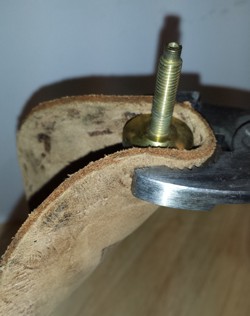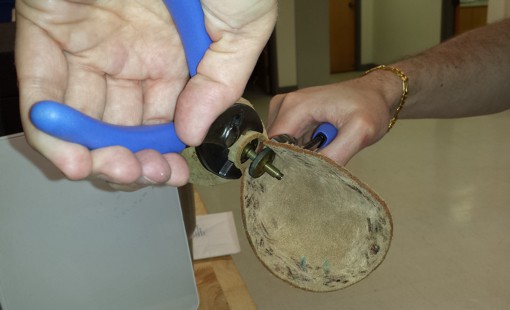Freeing Stuck Screws
Oftentimes when trying to disassemble a telegraph instrument for cleaning, you will find that some of the steel screws are rusted to the point that you are unable to back them out with a screwdriver. Or, sometimes the knurled thumbscrews, because of dirt and/or oxide buildup on the threads, are too tight to remove by hand. You surely don't want to use pliers to remove them because you will damage the fine knurling on the screw heads. Below I have outlined procedures to deal with both situations.
Rusted Steel Screws
Rusted screws can be a real pain in the butt to remove without the proper tools. Many times people will damage the slotted head on the screw when the screwdriver slips and tears a little piece out of the screw head.
The secret to removing rusted screws is to the use the proper penetrating oil. For this purpose we will use Kroil, the best penetrating oil available. Kroil is advertised as "The Oil That Creeps", and it does just that. When applied, it spreads out and penetrates every nook and cranny of the screw joint, softening the rust.
Just apply a single drop of Kroil to the joint between the screw head and the part into which it's attached. If the screw passes all the way through the metal, apply a drop to that end as well. Wait about 15 minutes then use your screwdriver to back out the screw. You will still likely have to use some elbow grease to get the screw started but it should break free. If it's still stuck, you might want to set the part on a sturdy surface and give a good whack to the top of the screw head with a hammer, which can often help break the rust bond.
If you have a vise, you might be able to get better leverage by clamping the part in the vise. Be sure to protect the part from damage by the vise by taking one of your leather drink coasters and folding it over the part before clamping in the vise. This will keep the part from getting scratched or dented.
Loosening Knurled Thumb Screws
Knurled thumb screws are designed to be adjusted with the fingers, not with a tool; however, on old telegraph instruments the buildup of dirt and/or oxides on the threads of the screws may cause the screws to fit so tightly that they can no longer be removed by hand. DO NOT use pliers directly on the screw head to loosen it. You might be able to free it, but you will damage the delicate knurls on the screw head in the process.
Instead, take one of your leather drink coasters, fold it in half around the knurled screw head, then clamp the slip-joint pliers around the leather to loosen the screw. Sometimes you might find that you have a knurled nut on a knurled screw that are stuck together. Same principle applies, just use 2 leather drink coasters and 2 pairs of slip-joint pliers, one set for the screw head and one for the nut. This will require 2 hands to perform.
The pictures below illustrate the proper use of the leather to protect the delicate knurling on the brass screws. The second picture shows how to grip the screw and jam nut at the same time in order to loosen and separate them. You can see how the leather protects the knurling from damage:
 |
 |
|---|
